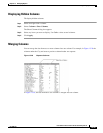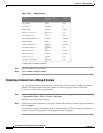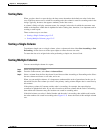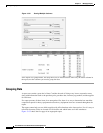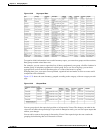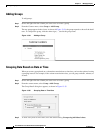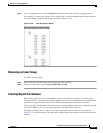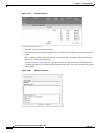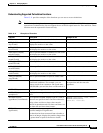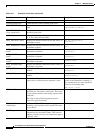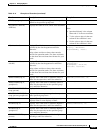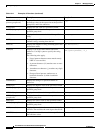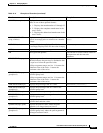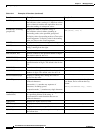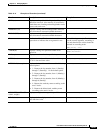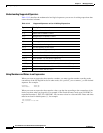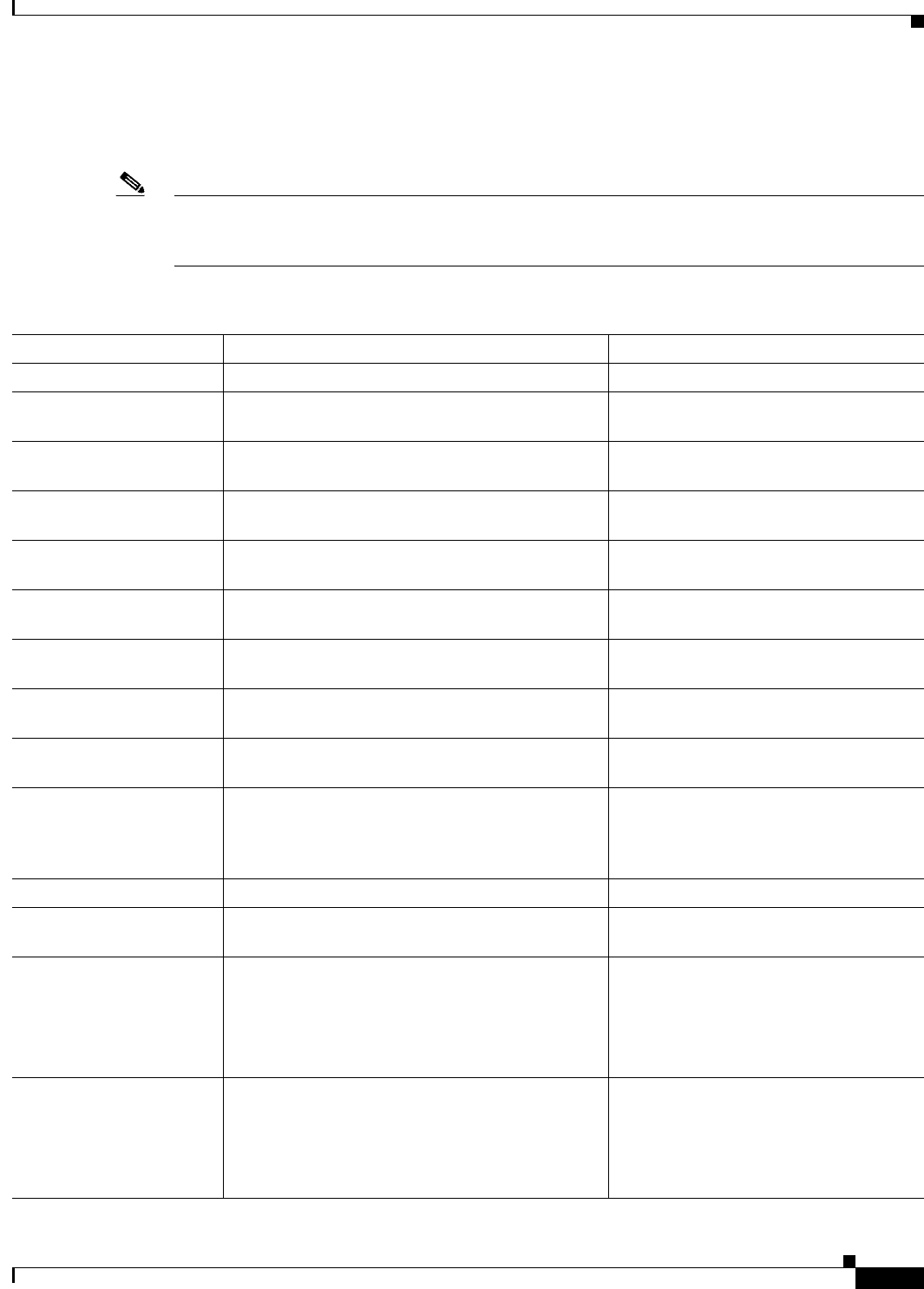
13-53
User Guide for Cisco Secure Access Control System 5.3
OL-24201-01
Chapter 13 Managing Reports
Organizing Report Data
Understanding Supported Calculation Functions
Table 13-11 provides examples of the functions you can use to create calculations.
Note The Calculation dialog box does not support the use of uppercase TRUE and FALSE functions in
expressions.Calculation also does not support the use of initial capital letters for True and False. These
functions must be expressed in lowercase only.
Table 13-11 Examples of Functions
Function Description Example of use
ABS(num) Displays an absolute value for the data in a column.
ABS([TemperatureCelsius])
ADD_DAY(date,
daysToAdd)
Adds a specified number of days to a date value and
displays the result as a date value.
ADD_DAY([ClosingDate], 30)
ADD_HOUR(date,
hoursToAdd)
Adds a specified number of hours to a time value
and displays the result as a time value.
ADD_HOUR([OpenHour], 8)
ADD_MINUTE(date,
minutesToAdd)
Adds a specified number of minutes to a time value
and displays the result as a time value.
ADD_MINUTE([StartTime], 60)
ADD_MONTH(date,
monthsToAdd)
Adds a specified number of months to a date value
and displays the result as a date value.
ADD_MONTH([InitialRelease], 2)
ADD_QUARTER(date,
quartersToAdd)
Adds a specified number of quarters to a date value.
ADD_QUARTER([ForecastClosing], 2)
ADD_SECOND(date,
secondsToAdd)
Adds a specified number of seconds to a time value.
ADD_SECOND([StartTime], 30)
ADD_WEEK(date,
weeksToAdd)
Adds a specified number of weeks to a date value
and displays the result as a date value.
ADD_WEEK([askByDate], 4)
ADD_YEAR(date,
yearsToAdd)
Adds a specified number of years to a date value.
ADD_YEAR([HireDate], 5)
AND Combines two conditions and returns records that
match both conditions. For example, you can
request records from customers who spend more
than $50,000 a year and also have a credit rank of A.
This function is used to connect clauses in
an expression and does not take
arguments.
AVERAGE(expr) Displays an average value for the column.
AVERAGE([CostPerUnit])
AVERAGE(expr,
groupLevel)
Displays the average value at the specified group
level.
AVERAGE([TotalCost], 2)
BETWEEN(value,
upperBound, lowerBound)
For a specified column, displays True if a value is
between two specified values and False otherwise.
String values and date or time values must be
enclose in quotation marks. For dates and times, use
the short date and short time formats.
BETWEEN([PostalCode], 11209, 12701)
BETWEEN([ReceiptDate],
“10/01/06”, “12/31/06”)
CEILING(num,
significance)
Rounds a number up, away from 0, to the nearest
specified multiple of significance.
For data that has been converted from a double or
float to an integer, displays the smallest integer that
is greater than or equal to the float or double.
CEILING([PortfolioAverage], 1)



